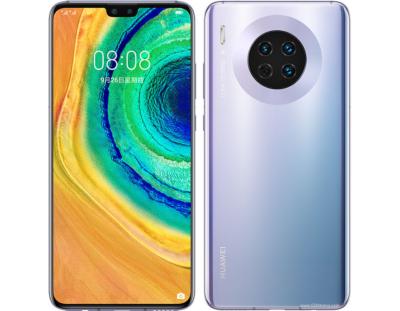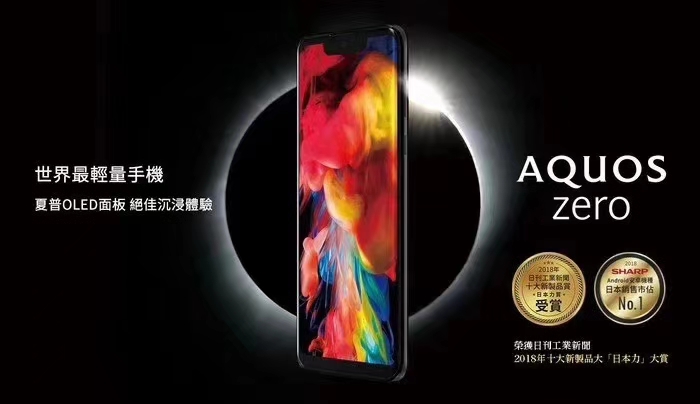OLED Smartphones - introduction and industry news - Page 26
OnePlus says its next phone to feature a 120Hz SDC AMOLED display
In May 2019 OnePlus launched the OnePlus 7 Pro - a flagship smartphone that features a large 6.67" 90Hz 1440x3120 Fluid AMOLED - a 90Hz Super AMOLED (produced by Samsung Display).

OnePlus now officially announced that its next phone (the OnePlus 8) will feature a high-end AMOLED, developed in collaboration with Samsung, that will feature a refresh rate of 120Hz, a peak brightness of 1,000 nits, 10-bit color support and a 2K+ resolution. OnePlus again brands its Super AMOLED displays as Fluid Display. The touch sample rate will be 240Hz and the phone will include a hardware MEMC smooth-video accelerator.
Huawei's next flagship phone, the Mate 30 Pro, to sport flexible OLEDs made by Samsung and LG
Huawei's Mate 30 and Mate 30 Pro smartphones, released in September 2019, sported AMOLED displays made by Samsung Display (rigid 6.62" 1080x2340) and BOE (flexible 6.53" 1176x2400, the Mate 30 Pro).

According to a report from Korea, Huawei will soon launch its next flagship phones, the Mate 40 and Mate 40 Pro - and the flexible OLEDs used in the Mate 40 Pro will be supplied by Samsung and LG Display (50% split). This is an interesting achievement by the Korean OLED makers and likely quite a blow for BOE. Apparently BOE could not match Huawei's requirement for this curved OLED display.
Counterpoint: 600 million OLED smartphone displays to ship in 2020
Counterpoint Research estimates that OLED smartphone sales will reach 600 million units next year, as phone makers adopt OLED displays in more mid-range and low-end devices.

Counterpoint says that OLED penetration in Samsung devices will surge from 45% in 2019 to 71% in 2020. Both Apple and Oppo will use OLED displays in 50% of their phones next year.
IHS: smartphone AMOLED shipments reached a record high of 146 million units in Q3 2019
IHS Markit says that smartphone AMOLED shipments reached 146 million in Q3 2019 - a record high, and up from 93 million in the second quarter. LTPS LCD shipments reached 144 million - and this is the first quarter in which AMOLED shipments surpassed LTPS LCD shipments. a-SI LCD is still the leading technology with shipments of 177 million.
Following the increased demand for AMOLED displays, Samsung Display regained its leading position in the market (with a 29% market share), replacing BOE. The third largest suppler is Tianma.
Is this Samsung's second foldable smartphone?
New images were leaked on Chinese media, showing a new foldable phone design - that is reportedly made by Samsung. This could be the company's upcoming second foldable phone (the Galaxy Fold 2 perhaps?).

The design looks somewhat similar to the clamshell Motorola Razr 2019 - but in Samsung's design (if this is indeed a Samsung phone) there is only a very small external display for notifications - which looks to be a white PMOLED.
Motorola delays the foldable Razr 2019 launch due to high demand
Motorola says that due to unexpected high demand, it is delaying the launch of its $1,500 foldable OLED phone, the Razr 2019. The company did not announce a new launch date (previously it was December 26th) but says that the company "does not anticipate a significant shift from our original availability timeline".

Motorola says that "Since its announcement in November, the new motorola razr has received unparalleled excitement and interest from consumers. Demand has been high, and as a result, has quickly outgrown supply predictions".
Samsung Display expects 5G networks to drive up OLED smartphone sales
Samsung Display says that the surge of 5G-enabled smartphones will greatly benefit its OLED display business.

Samsung says that 5G networks are expected to increase demand for smartphones in general. In addition, the thin form factor of OLED displays (compared to LCDs) enable smartphone makers to use more space for more sensors and larger batteries - which may be needed to support 5G networks.
Xiaomi shows the fold-around Mi Mix Alpha concept smartphone in its HK store
In September 2019 Xiaomi unveiled a new "concept" smartphone, the Mi Mix Alpha, which uses a foldable OLED screen wrapped around the phone. Xiaomi said this phone will be produced in small quantities (with a price tag of around $2,800) and indeed it is now displaying it in its shop in Hong Kong:
The AMOLED display, produced by Visionox, is 7.92" in size with a resolution of 2088x2250 (388 PPI).
UBI: high demand for rigid OLEDs may result in conversion of flexible OLED lines to rigid ones
UBI Research posted an interesting note. The company says that rigid OLED shipments (237 million) command a 79.2% market share of the entire OLED smartphone market, up from 64.5% in 2018.

Display makers have mostly invested in flexible OLED production - but currently there is higher demand for the lower cost rigid OLEDs. All rigid OLED lines are currently in full capacity and UBI suggests that we may see some companies converting flexible OLED lines to rigid OLED production - or that we'll see new investments in rigid OLED production.
Sharp's 6.18" flexible AMOLED displays are now available on clearance at the OLED Marketplace
Sharp started producing flexible OLEDs in low volume in August 2018, and have adopted these displays in its own smartphones. According to reports Sharp understands it cannot compete with Korean and Chinese companies with both technology and price and has halted smartphone OLED production (although it still develops advanced OLED technologies and will continue to produce OLEDs for other applications).
We now offer Sharp's flexible OLED displays at the OLED marketplace, at a clearance sale. These are high-end 6.18" 1440x2992 flexible AMOLED displays with on-cell touch, and we have 15,000 such panels available at a great price. Check out more information over at the OLED Marketplace, or contact us now.
Pagination
- Previous page
- Page 26
- Next page





